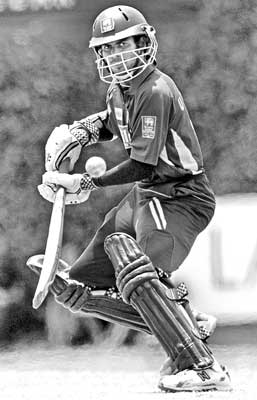
Tough times for outstation
Cricketers appear on grounds around the country and games from Junior school and club cricket, up to premier division games go on around the year. How marvellous it is when the national stars perform startling deeds against the best of the world. They are then praised and marvelled. There are days when they fail. Then they are criticized and ridiculed. The wheel keeps turning.
To reach the highest level and compete successfully there are a whole lot of requirements. From an infrastructure point of view, grounds with turf facilities, indoor nets, gymnasiums, swimming pools, form part of the basics in the game today. To build, then maintain all of these, requires huge sums of money. Similarly, individuals, clubs and schools require playing equipment. Bats, pads, gloves, other protective equipment and footwear are also vastly expensive. Again, walk around the grounds and there does not seem to be a shortage. All those participating look sufficiently well geared. It is going on, but with great difficulty. My recent coaching assignments, gave light to some of the issues, facing two schools. In the under 17 age group, St. Thomas’College, Mt. Lavinia, played against Debarawewa M.V. from Tissamaharama and Revatha M.M.V. from Balapitiya. Both schools, in the recent years have performed quite creditably. Particularly at junior level when games are played on matting pitches. These schools are battling to stay alive in the game. They are desperately short of facilities and the efforts of a few dedicated individuals is their saving grace. It is a tight rope that they are walking on. Individuals are finding it more and more difficult to sacrifice their precious time towards the game, unless there are more definite forms of reward. Debarawewa M.V. now play the game only upto Under 17 age group. Since 2004, they have scrapped the first eleven team due to lack of funds. It was only a couple of years before that they created a sensation by beating Royal College, in a limited over fixture. With what they get from the school, a sponsor, Sri Lanka Cricket, parents and some old boys, the junior teams survive. Being in their location in the country, they have to engage in a lot of travel to play their matches. Another costly exercise these days. The players had reasonable ability. They had reached the top of the southern group and were very competitive. For those who are seventeen, their cricket comes to a standstill in a few weeks time. Some of them get picked up by schools in Galle or Matara. A few of the better players may get the opportunity to get into a school in Colombo, while the rest have to bring their school cricket to a premature end. Next it was a trip to Balapitiya to play against Revatha MMV. Their woes were not much different, but they had an added difficulty with the ground. They use the Training College ground, which had also housed the hostel, but had been damaged by the tsunami and is now demolished. So too the small pavilion. A small steel shed was erected for the day as the changing area. No other facilities. It is a vast area of land. I was told there is a total of about fourteen acres and that there is a trust of management and the Education Ministry also involved with its functions. To put it quite simply it was in a state of neglect. My thoughts drifted to the fact that it was twenty five years since Sri Lanka was awarded test status and yet no turf cricket ground has been constructed between Panadura and Galle. Mind you, this is the belt that is capable of churning out cricketers to go on and bring honour to the country. Yet, a basic facility is lacking. The cricket world is moving forward, barring Zimbabwe who are struggling with their internal conflicts. Sri Lanka needs to watch out. They have survived because the natural talent and commitment of the players. The clubs, particularly the older ones have provided sufficient to hold things together. That may not be enough for the future. It is time to take notice and take all necessary action. |
|| Front
Page | News | Editorial | Columns | Sports | Plus | Financial
Times | International | Mirror | TV
Times | Funday
Times || |
| |
Copyright
2007 Wijeya
Newspapers Ltd.Colombo. Sri Lanka. |
 Upul Tharanga a typical village product from the South of Sri Lanka has made it good. Ironically at present many schools are finding it difficult to stay in the game and some are also dropping out. Add to these woes not a single new turf wicket has been built in the South in the recent past
Upul Tharanga a typical village product from the South of Sri Lanka has made it good. Ironically at present many schools are finding it difficult to stay in the game and some are also dropping out. Add to these woes not a single new turf wicket has been built in the South in the recent past